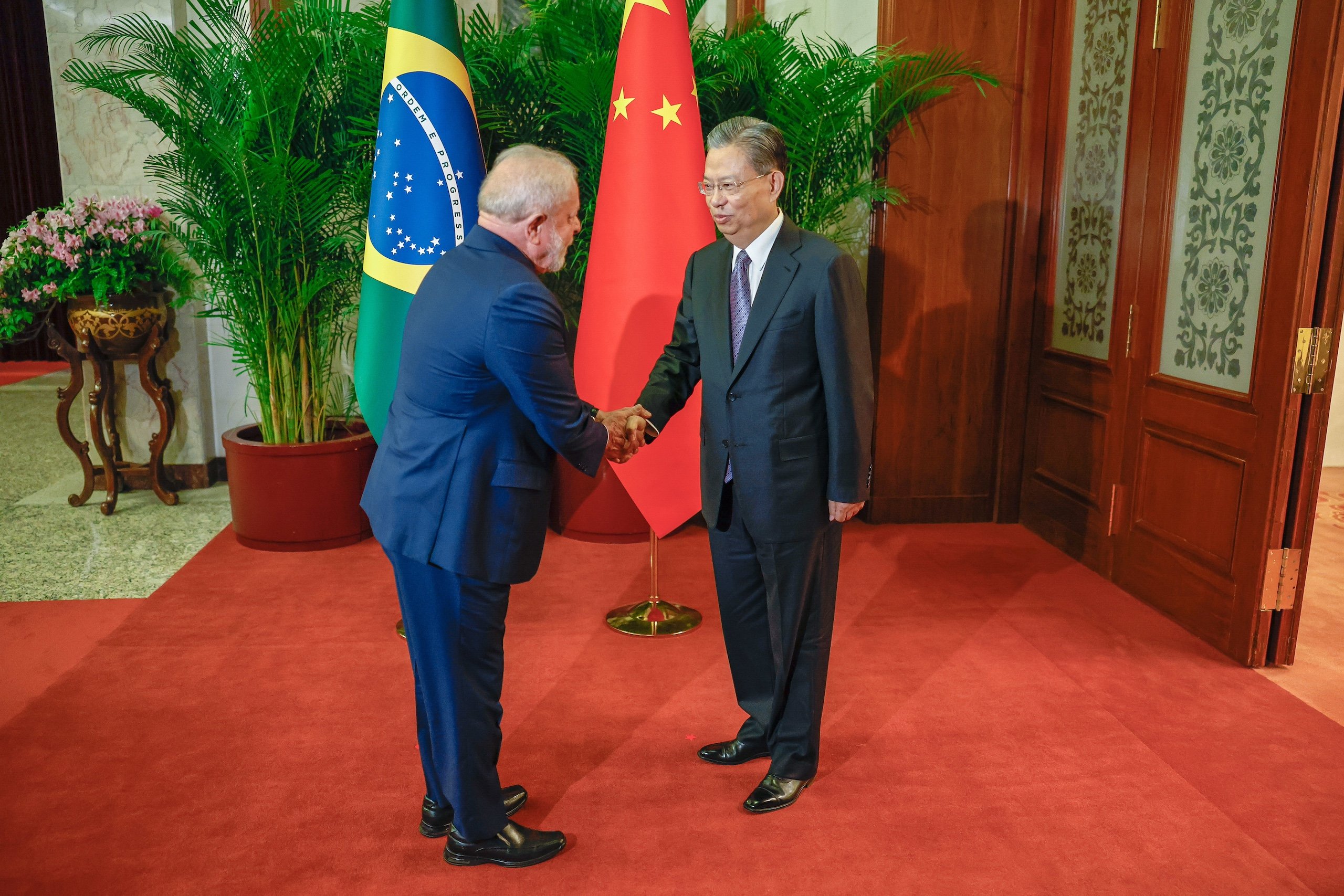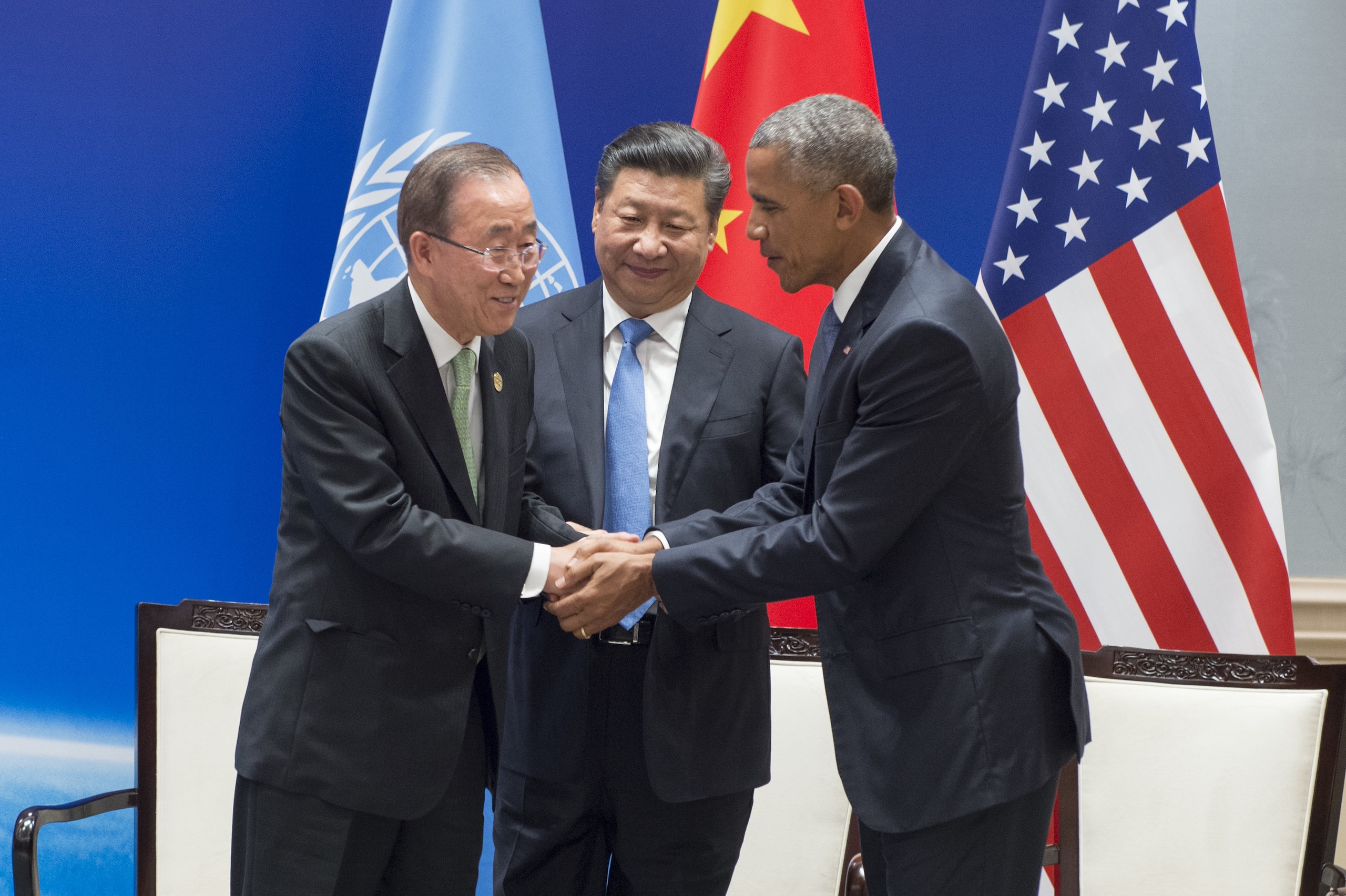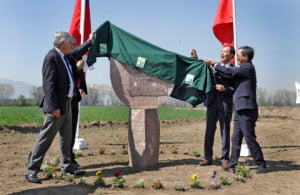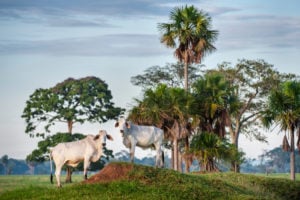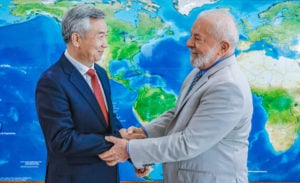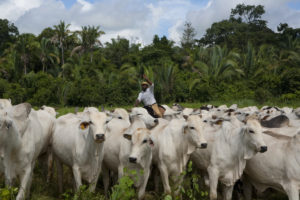On the cusp of the 50-year milestone, diplomatic relations between Brazil and China look to be full of promise, though a positive feeling seems yet to translate into many concrete benefits for the environment.
During a 2023 visit to Beijing by the Brazilian president, Luiz Inácio Lula da Silva, the two countries set out ambitious goals for their future partnership, with a joint declaration pledging “to broaden, deepen and diversify” bilateral cooperation on climate issues, in areas such as renewable energy, electric mobility and green finance.
However, few partnerships have so far taken shape. Notwithstanding the construction of a new China-Brazil Earth Resources Satellite (CBERS) to monitor the Amazon, which is still underway, and projects taking place at the state level, there have been no joint environmental announcements since 2023. Political goodwill aside, no binding commitments have been made.
At the same time, challenges related to the countries’ trade persist. Brazil is under pressure to eliminate illegal deforestation, driven by cattle ranching, mining and agriculture, while China seeks to secure supplies of raw materials from abroad: the South American country continues to be a key supplier of commodities to China – its largest trading partner – and imports its higher-value-added products in return.
As the countries have begun to mark the 50th anniversary, China has sought to highlight the role it has played in supporting socio-economic development in Brazil, through its trade and investments. Brazil, meanwhile, continues to welcome new investments from Chinese companies.
Dialogue Earth spoke with analysts in Brazil for insight and perspectives from the country on five decades of bilateral ties with China, on the two nations’ environmental relations and future opportunities.
“In the last 70 or 80 years, both have undergone processes of profound development, from agrarian to urban societies, at very high environmental costs,” says the political scientist and author Maurício Santoro. “This happened through Chinese socialism and Brazilian capitalism, and now both must deal with past choices as they aim for sustainable development.”
To 1992: Development at all costs?
In one of the earliest encounters between the two countries, in 1843, Brazil opened a consulate in Canton – modern-day Guangzhou – in southern China, in an unsuccessful attempt to import Chinese labour. It would take another 131 years for diplomatic relations to really take flight between the two countries, when Brasília formally recognised the government of the People’s Republic of China on 15 August 1974.
According to Santoro, at the time, each nation saw the other as a developing country, similarly critical of the global north and in search of more autonomy.
The environmental diplomatic breakthrough was cultivated two years earlier, at 1972’s inaugural UN Conference on the Human Environmentin Stockholm, Sweden. It marked the first major meeting of heads of state convened by the UN to deal with environmental issues.
During the conference, Brazil and China found common ground: “In Stockholm, together with China, Brazil led the alliance of peripheral countries opposed to discussing environmental problems,” says Eduardo Viola, a professor of international relations at the University of São Paulo and the Getulio Vargas Foundation.
According to Viola, this stance aligned with the development model of Brazil’s military government (1964-1985), which pursued unbridled natural resource extraction, highly polluting industries and the intense exploitation of cheap, unskilled labour.
The Brazilian government also recognised China’s shared interest in advancing its development. “The environmental issue was perceived as an obstacle that developed countries wanted to impose on underdeveloped countries,” says Santoro.
This apparent rejection of environmental responsibilities was to last for decades. In Brazil, a change in stance began once democracy was officially re-established in 1988. At the 1992 UN Conference on Environment and Development in Rio de Janeiro, Brazil presented a more progressive attitude than during its years of the military dictatorship, though it continued to reject mandatory targets for climate change mitigation.
Brazil “defended a radical interpretation of the principle of ‘common but differentiated responsibilities’,” says Viola, referencing the notion that while all countries should fight climate change, developed nations should foot the bill.
In China’s case, this reticence on climate change would take a while to dislodge, according to Viola: “In those years, Brazil’s discourse was much more pro-climate. China’s discourse was not at all concerned with the issue.”
The 2000s: Commodities boom
Trade between China and Brazil continued to advance slowly through to 2000 when, according to Brazilian foreign trade data, the value of annual trade stood at USD 2.3 billion.
In the following decade, in Brazil and across Latin America, huge increases were seen in trade with and investment from Chinese companies, amid growing demand for raw materials from the Asian country as it looked to support its rapid economic growth – a period that became known as the “commodities boom.”
By 2009, China had become Brazil’s main trading partner and was responsible for a large chunk of its trade surplus. By 2010, the value of annual trade had reached USD 56.3 billion.
Chinese demand has been a factor in driving up the price of many commodities, which has been welcomed in Latin America. “It’s a mutually beneficial relationship,” says Raquel Patrício, an international relations professor and Brazil-China diplomacy expert at the University of Lisbon.
However, this long-established trade pattern has created something of an imbalance. “We basically export primary products, while China exports more high-tech products to Brazil – sometimes adding value [to Brazilian products] and returning them here,” explains Thais Diniz Oliveira, who researches sustainable global trade at Cornell University in the US.
According to Oliveira, the increase in domestic and international demand for commodities such as oil, ore, meat and grains has also been an obstacle for Brazil’s renewable energy transition. She says that it has also become an unsustainable burden for sensitive biomes, and Brazilian communities trying to live in traditional ways.
Although most of the beef produced in Brazil is for the domestic market, Brazilian beef exports are increasing, and China is its biggest buyer. In 2022, the size of Brazil’s cattle herd hit a record high of 234.4 million cows, compared to a human population of 203 million. The largest herds are in municipalities of the Amazon or the Pantanal, such as São Félix do Xingu in the northern state of Pará, and Corumbá in Mato Grosso do Sul.
Unlike beef, more than half of the soy produced in Brazil between 2000 and 2020 was destined for foreign markets; in 2023, 75% of Brazilian soy exports went to China. A 2022 study by Plataforma CIPÓ, a Rio de Janeiro-based climate and governance research institute, suggested that this rise in exports of primary products from Brazil to China may have accelerated Amazon deforestation.
“Behind meat production in Brazil, there is deforestation,” says Oliveira. She adds: “We can’t attribute the problem of deforestation of soy and meat to China alone, but even so, it’s a major importer.”
China has also invested in Brazilian infrastructure to facilitate agricultural production and trade flows, with an eye on its own food security. One such initiative is the so-called Fiol railway, planned to link northern Brazil’s Figueirópolis with a port terminal in the coastal city of Ilhéus; the state-owned China Railway is involved in its construction.
The project has proven controversial with traditional communities who live in its vicinity, who report extensive environmental damage, and fear threats to local water sources and fishing industries. Chinese companies have, however, previously withdrawn from involvement in the port project.
The 2010s: New climate diplomacy
While bilateral trade between Brazil and China has been growing, so too have efforts to stem greenhouse gas emissions, prompting a proliferation of national commitments across the world.
Eduardo Viola considers the COP15 climate change conference, held in Copenhagen in 2009, to be the “moment of great differentiation” between China and Brazil: Brazil presented a voluntary commitment to reduce emissions, while “China considered it unthinkable to agree to a peak in emissions”.
In the weeks leading up to COP15, Brazil’s then-environment minister Carlos Minc issued a statement expressing his frustration with China and the United States, both having refused to commit to numerical targets. The negotiations at COP15 proved difficult and ended with neither China or the US having presented clear climate action targets.
During the Copenhagen summit, Brazil and China formed the BASIC bloc with India and South Africa. Izabella Teixeira, who became Brazil’s environment minister in 2010, said the bloc became “an important space of interlocution” in the years that followed, helping the countries to bring their positions closer together. Brazil later put forward voluntary emissions-reduction targets, which strengthened its hand and won the country praise for helping to break negotiation deadlocks.
A global agreement was eventually achieved at COP21 in Paris during 2015: the milestone Paris Agreement formalised the goal of cutting greenhouse gas emissions to limit the average global temperature rise to 1.5C above pre-industrial levels. At COP21, the Chinese government displayed a growing determination to make progress on mitigating climate change. “They realised that if they didn’t enter into this discussion in a more constructive way, there would never be an agreement,” says Santoro.
China had also began to ramp up its investments in new green technologies. Now, it is the world’s largest producer and consumer of renewable energy, with production growing by an average of 26% every year between 2010 and 2022.
China now also plays a dominant role in global supply chains for a range of low-carbon technologies, from the manufacture of solar panels and wind turbines to electric vehicles and lithium batteries. “China has become a technological and scientific benchmark in the decarbonisation process,” says Santoro, “with Brazil lagging behind.”
The 2020s: Are new ways of cooperation possible?
From 2019, diplomatic relations between the two nations entered a more turbulent period after Jair Bolsonaro took power in Brazil, as the country’s first leader take an openly anti-China stance. Despite regular frictions during his four-year term, their strong commercial interdependence meant business continued to thrive, even as tensions rose during the emergence of Covid-19.
A more amicable atmosphere resumed in 2023, with Lula’s return as Brazil’s president. His administration has sought to pursue a more sustainable reindustrialisation, to recover from the environmental setbacks during the Bolsonaro years, and to advance the country’s energy transition.
It is in this context that new opportunities for bilateral cooperation have arisen. “The Brazilian government has set sustainability priorities and there is a door for China to step through, either via direct investment or technology transfer,” says João Cumarú, a researcher at Plataforma CIPÓ.
Cumarú sees four particularly promising areas for climate cooperation: strengthening biodiversity conservation policies; incorporating Chinese forestry experience and policy approaches to recover degraded areas; cultivating greater Chinese participation in Brazilian energy policy; and increasing cooperation on climate policy.
China could also follow the lead of the European Union by demanding cleaner supply chains for its imports, says Cumarú. The EU recently passed legislation to ban the purchase of commodities associated with deforestation and human rights violations – though this has encountered opposition from the agricultural sector in South America.
China wants to build a multipolar world, and a strong Brazil is in its interestAna Tereza Lopes Marra de Sousa, professor at São Paulo’s Federal University of ABC
However, Cumarú acknowledges that such interventions would clash with China’s usual foreign policy: “China’s diplomatic practice of non-interference prevents it from making this demand – unlike the European Union, which does so directly.”
In geopolitical terms, China “wants to build a multipolar world, and a strong Brazil is in its interest,” says Ana Tereza Lopes Marra de Sousa, an international relations professor at São Paulo’s Federal University of ABC.
Marra de Sousa says the Brazilian government, for its part, would like China to transfer more of its green technology, but adds that Chinese companies may not readily release such assets. For this reason, she advocates for joint technological development – in the vein of the two countries’ pioneering satellite projects.
In 1988, a Brazil-China agreement enabled one of the longest-running bilateral cooperation projects in the world: the China-Brazil Earth Resources Satellite (CBERS), used to monitor the Amazon. Since then, six satellites have been launched and two are still in operation. The seventh, CBERS-6, is scheduled to go into orbit in 2028, and its estimated USD 100 million price tag will be split equally between both nations.
The CBERS project was initially created as a scientific knowledge exchange, but ultimately became central to combating the deforestation of Brazilian biomes. “It’s a pioneering programme,” says Santoro, “and to this day an important model for scientific and technological development between countries of the global south.”
